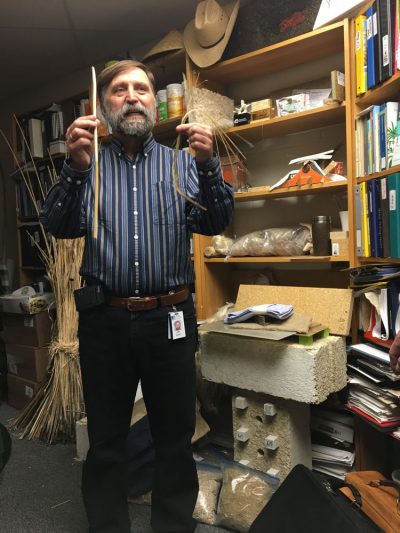Hemp industry growing up and branching out
By Sean Feagan, Local Journalism Initiative Reporter
Alberta’s hemp industry is gaining momentum and diversifying, according to research and business leaders in the province.
The accomplishments and potential of the crop were discussed during a Jan. 28 workshop by InnoTech Alberta, an applied research and technology organization and subsidiary of Alberta Innovates, a provincial agency.
Alberta is a key player in Canada’s hemp industry, explained Jan Slaski, InnoTech principal researcher. Over the last six years, an average of 200,000 acres per year were grown across Canada, of which 30 to 40 per cent was produced in the province, he said.
But Alberta hemp is still just sprouting.
“I believe that here in Alberta, we have even bigger potential to develop and expand further the hemp industry,” he said.
Slaski represents Alberta in the Canadian Hemp Trade Alliance, which forecasts that by 2023, the hemp industry in Canada will be a billion-dollar industry.
InnoTech has shown hemp successfully grows in Alberta, so now it is focusing on advancing the value and supply chain, by testing emerging research, developing industrial-scale production and processing, and manufacturing materials and products for commercial use, said Steve McMahon, chief operating officer.
“This is a big deal – it’s a big shift,” he said.
Hemp plants feature leaves, roots, flowers, seed, fibre and shives (the wood inner portion of the stalk), which together offer an array of commercial and industrial applications, explained McMahon. Examples include fibre materials, paper, fuel energy, food products, textiles, cosmetics and medical products, and the list goes on.
Slaski likened the industry to a four-cylinder engine, with each cylinder representing each sub-industry focused on applications of different part of the plant.
“The Canadian hemp industry will reach its potential by seizing the value of the whole hemp plant and is on the right path to achieve this goal,” he said.
Seed production is the most established usage stream for the plant. But starting three or four years ago, hemp for fibre started to be grown in the province, he said. Then, two years ago, with the introduction of the federal Cannabis Act, hemp production for cannabidiol (CBD) took off. The fourth cylinder, that is has not quite started firing up just yet, is the use of hemp grain for livestock feed.
Alberta HUB, an alliance of 43 member communities, post-secondaries, businesses and industry representatives in northeast Alberta, has been at the forefront of the hemp industry in Alberta. The Alberta HUB region spans nine counties, three First Nations and four Metis settlements.
The region is emerging as a global leader in industrial hemp production and manufacturing, said Bob Bezpalko, Alberta HUB executive director. Last year, about 14,000 acres of hemp was grown for seed, fibre, CBD or a combination of all three, he said. But in 2019, 25,000 acres were grown.
Alberta HUB’s northerly location is advantageous for growing hemp for fibre because longer hours of sunshine in the summer, cooler nights and long dews have been shown to result in a 30 per cent increase in hemp biomass, he said.
InnoTech Alberta boasts Canada’s largest hemp research facility, located in Vegreville, Alta., which is part of Alberta HUB. There is a local benefit of having this facility in town, said Vegreville Mayor Tim MacPhee.
“All this research and innovation was done based on climate conditions, and soil conditions around the Vegreville area,” he said. “What a bonus that is for our local farmers.”
The town has responded by investing in the industry, securing financing over the last three years to build a new 85-acre industrial park to attack hemp processors and manufacturers. Construction is starting this spring.
While the Jan. 28 workshop focused on hemp production in northern parkland regions of the province, hemp is grown locally in Wheatland County. According to Russell Muenchrath, the county’s agricultural manager, it is a matter of time until more hemp is grown in the county and the irrigation available here makes hemp a viable option for local producers.
“I haven’t seen a lot (hemp), but it’s around; there’s still lots of potential for it down here,” he said.
With processing plants located far away from Wheatland County, seed production might be a better option for local producers than hemp for fibre, he added. Also, fibre production requires a cutter and baler, which some might lack.
The greatest benefit of hemp to local producers might be its use in crop rotation, particularly for areas containing clubroot.
“It can fit into that rotation to be out of canola for extra years, to not just rely on your traditional wheat and barley,” said Muenchrath. “It’s always good to have another crop to fit in the rotation.”

